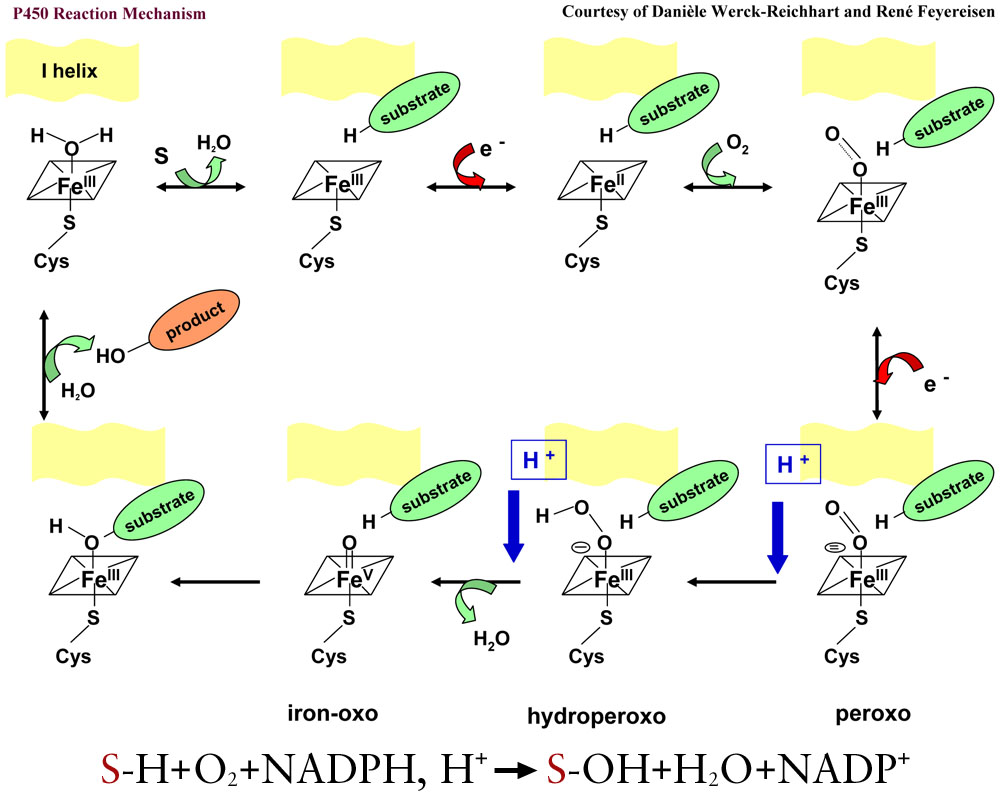

They indicate that the metabolism of quinate ester and tyramine amide of p-coumaric acid rely on the same recognition site in the protein. In addition to the liver, the P450 cytochromes also play vital role in lung, kidney, pancreas, brain, adrenal gland, bone marrow, skin, mast cells, testis, ovaries, olfactory organs, and small intestinal mucosa. Homology modeling, confirmed by directed mutagenesis, provides information on the protein regions and structural features important for some observed changes in substrate selectivity. Cytochromes P450 A Success Story Authors: Daniele Werck French National Centre for Scientific Research Ren Feyereisen Abstract and Figures Cytochrome P450 proteins, named for the absorption. (2003) Production of inhibitory polyclonal. CYTOCHROME P450 2C9 - Cytochrome P450 2C9 - an overview ScienceDirect Topics. (2000) Protein family review Cytochromes P450: a success story.
Cytochromes p450 a success story full#
One of the most significant is meta-hydroxylation of p-coumaroyltyramine, predominantly by the wheat enzymes, for the synthesis of suberin phenolic monomers. Cytochromes P450: a success story Genome Biology Full Text.
Cytochromes p450 a success story free#
Some of them might be significant in the metabolism of various free or conjugated phenolics in different plant species. However, CYP98s from divergent taxa have acquired different additional subsidiary activities. Three of the eight tested CYP98s from wheat have phenol meta-hydroxylase activity, with p-coumaroylshikimate being the primary substrate for all of these, as it is the case for CYP98s from sweet basil and Arabidopsis thaliana. While ancient duplication led to evolution of enzymes with different substrate preferences, most of recent duplicates underwent silencing via degenerative mutations. Our results indicate that the unusually high frequency of gene duplication in the wheat CYP98 family is a direct or indirect result from ploidization. Challenges are faced due to complex cofactor requirements and the availability of a redox-partner (cytochrome P450 reductase, CPR) can be a key element to get active P450s. Comparison of the catalytic properties of the recombinant enzymes with those of CYP98s from other plant taxa was coupled to phylogenetic analyses. Cytochrome P450 proteins, named for the absorption band at 450 nm of their carbon-monoxide- bound form, are one of the largest superfamilies of enzyme proteins. However, especially eukaryotic P450s are difficult to produce. CYP450 tests can also identify variations in other enzymes, such as the CYP2C19. By checking your DNA for certain gene variations, CYP450 tests can offer clues about how your body may respond to a particular antidepressant. Eight coding sequences belonging to the CYP98 family reported to catalyze the 3-hydroxylation step in this pathway were isolated from Triticum aestivum (wheat) and expressed in yeast. The cytochrome P450 enzyme includes the CYP2D6 enzyme, which processes many antidepressants and antipsychotic medications. Others, such as genes involved in the phenylpropanoid pathway have led to fewer duplication events. Within this superfamily some clans and families are heavily duplicated. A burst of evolutionary duplication upon land colonization seems to have led to the large superfamily of cytochromes P450 in higher plants.


 0 kommentar(er)
0 kommentar(er)
